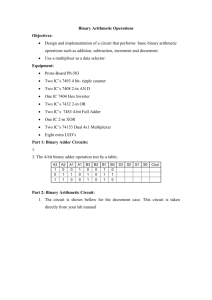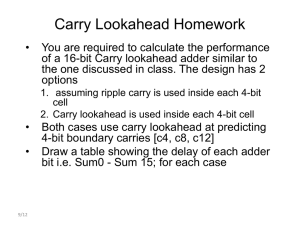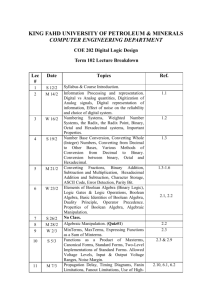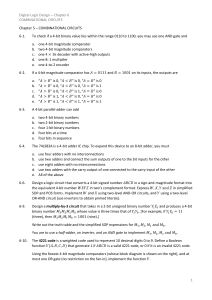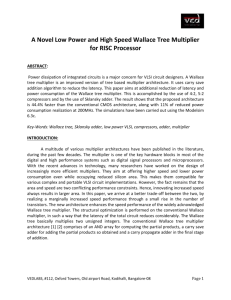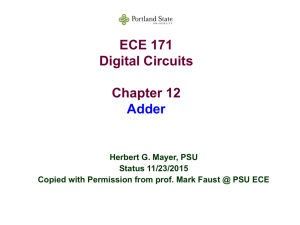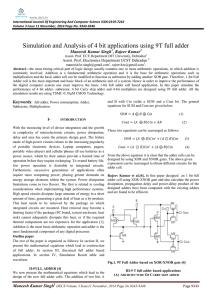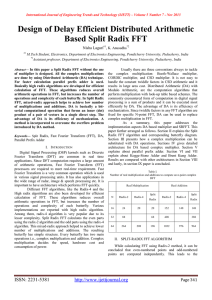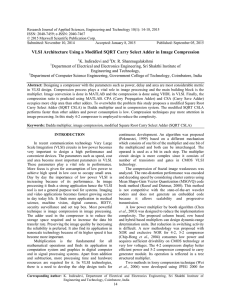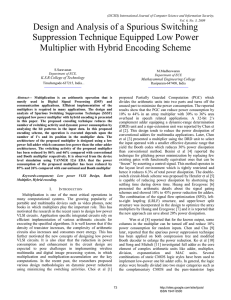Lab 3
advertisement
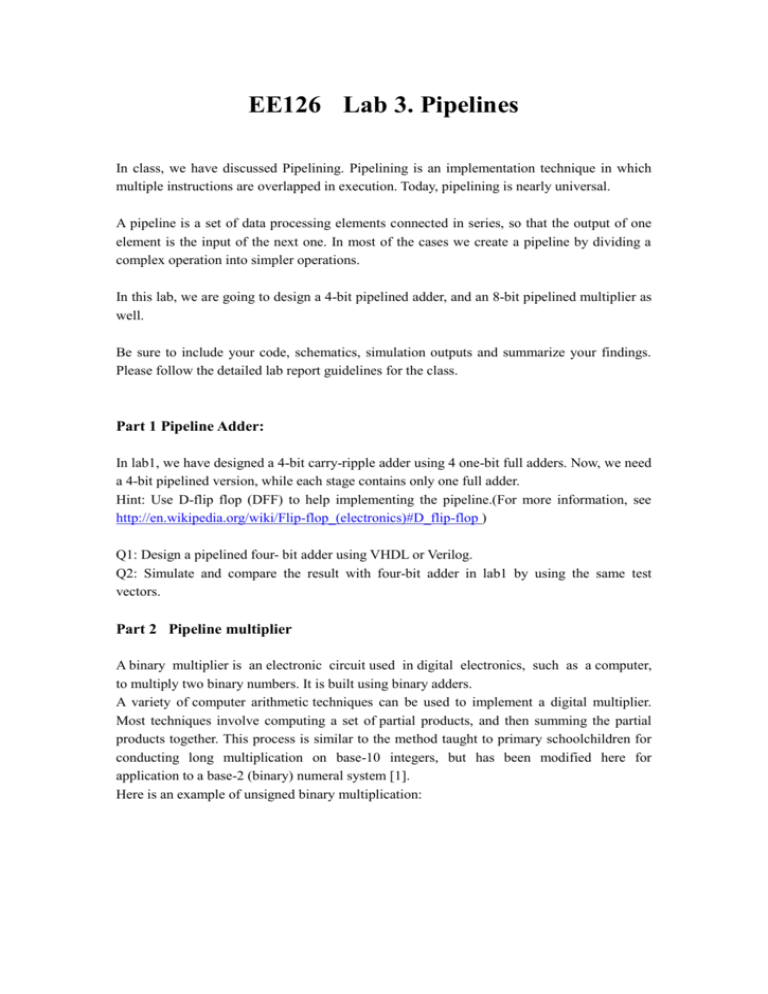
EE126 Lab 3. Pipelines In class, we have discussed Pipelining. Pipelining is an implementation technique in which multiple instructions are overlapped in execution. Today, pipelining is nearly universal. A pipeline is a set of data processing elements connected in series, so that the output of one element is the input of the next one. In most of the cases we create a pipeline by dividing a complex operation into simpler operations. In this lab, we are going to design a 4-bit pipelined adder, and an 8-bit pipelined multiplier as well. Be sure to include your code, schematics, simulation outputs and summarize your findings. Please follow the detailed lab report guidelines for the class. Part 1 Pipeline Adder: In lab1, we have designed a 4-bit carry-ripple adder using 4 one-bit full adders. Now, we need a 4-bit pipelined version, while each stage contains only one full adder. Hint: Use D-flip flop (DFF) to help implementing the pipeline.(For more information, see http://en.wikipedia.org/wiki/Flip-flop_(electronics)#D_flip-flop ) Q1: Design a pipelined four- bit adder using VHDL or Verilog. Q2: Simulate and compare the result with four-bit adder in lab1 by using the same test vectors. Part 2 Pipeline multiplier A binary multiplier is an electronic circuit used in digital electronics, such as a computer, to multiply two binary numbers. It is built using binary adders. A variety of computer arithmetic techniques can be used to implement a digital multiplier. Most techniques involve computing a set of partial products, and then summing the partial products together. This process is similar to the method taught to primary schoolchildren for conducting long multiplication on base-10 integers, but has been modified here for application to a base-2 (binary) numeral system [1]. Here is an example of unsigned binary multiplication: Looking at the truth table for multiplying 2 bits, the output of the table matches the output of an AND gate’s truth table. Thus, the multiplication process of 2 bits could be achieved using a single AND gate: Q3: Design a pipeline 8-bit x 8-bit multiplier using full adders and AND gates. (Hint: Usually we can use nine stages for this multiplier). You may use either VHDL or Verilog. Q4: Try running 1, 5, 10, 100, 500, and 1000 multiplications. Discuss the speedups. Q5:Discuss the advantages and the disadvantages of Pipelining. Due Date: Nov 17th [1] wikipedia: http://en.wikipedia.org/wiki/Binary_multiplier
